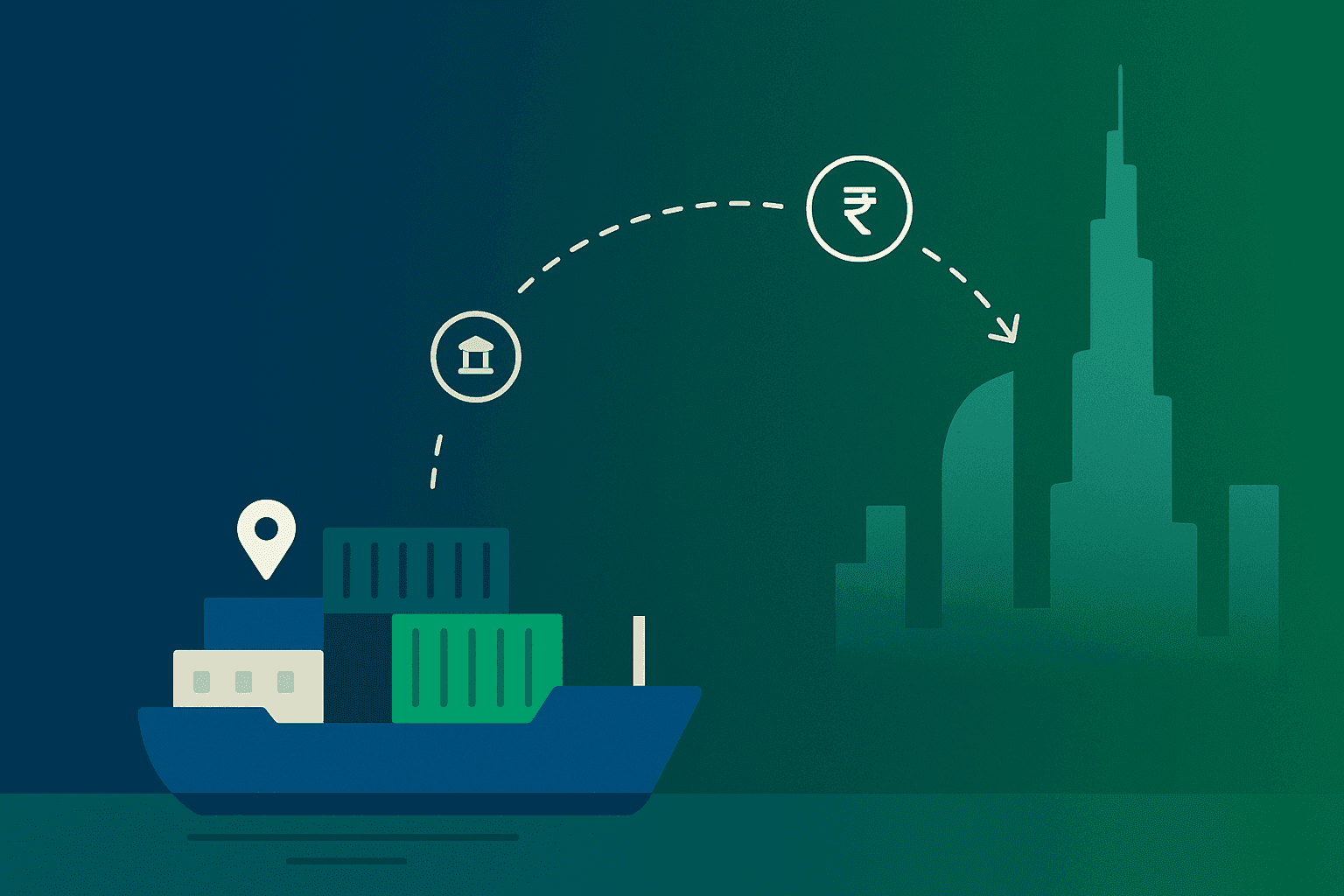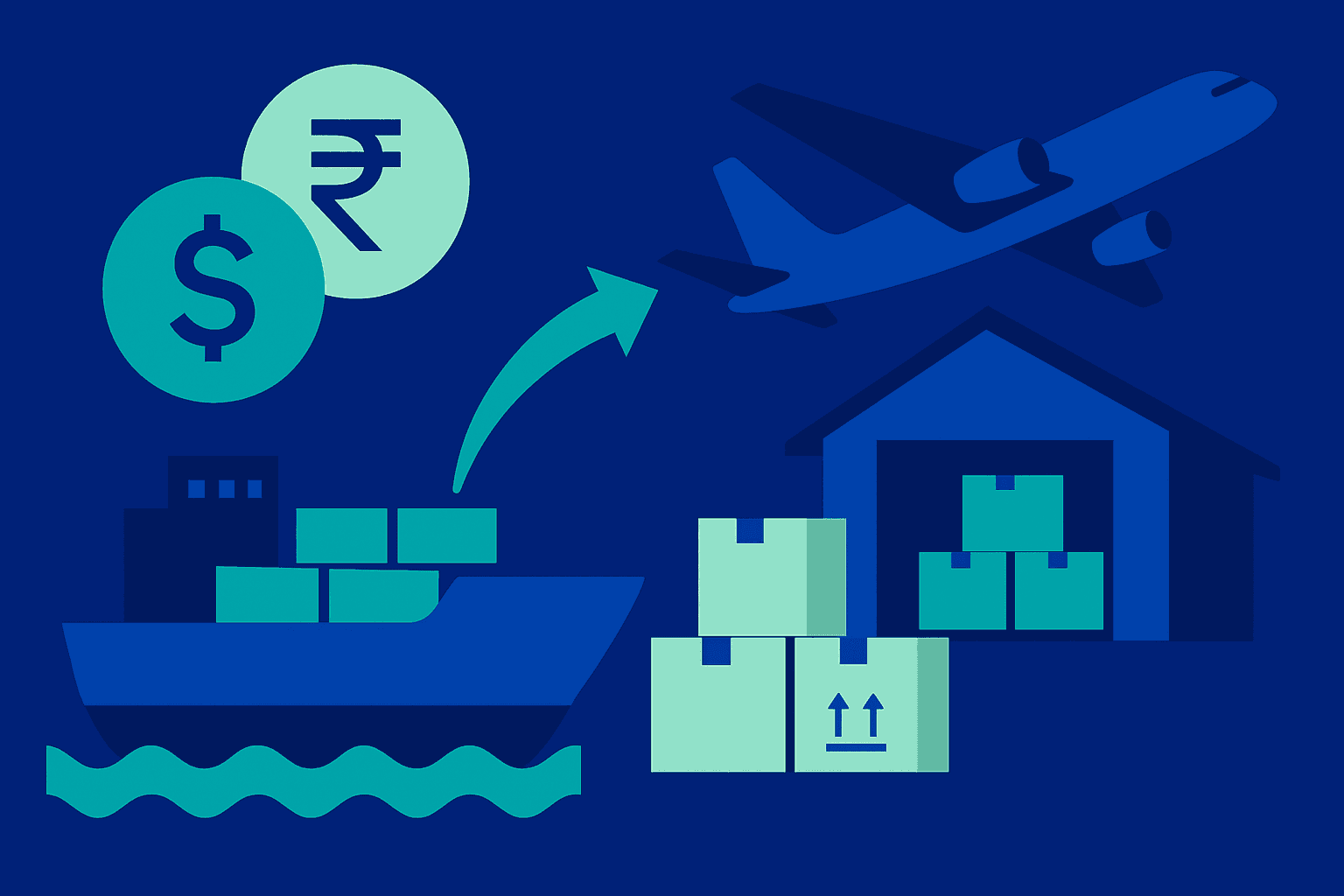Avoid Hidden International Transaction Charges: Tips for Indian Freelancers and Businesses

India’s export story is a headturner: US$824.9 billion in FY 2024–25, a promising 6% growth over the previous year. So if you are a freelancer or a business owner, this is the right time to take advantage of the momentum and expand your business overseas.
But, behind this impressive headline, there is a costlier reality. Many small Indian business working with overseas clients are giving their profits to hidden international transaction charges.
In this blog post, we'll uncover these hidden charges and provide practical tips to help you keep more of what you earn from foreign currency transactions.
Common International Transaction and Payment Charges
What are the different types of foreign transaction fees? When are they applied? What is the total cost? We answer all of these questions in this part of the blog.
SWIFT/Intermediary Fees
When a client sends you money via a SWIFT transfer, their bank typically applies an outward SWIFT fee, usually ranging from $15 to $30 per transaction.
In many business cases, this fee is either deducted from the payment amount or passed on to the recipient. Additionally, the payment may pass through multiple intermediary banks, each potentially charging its own fee, making the total cost difficult to predict.
Once the payment reaches your Indian bank, some banks may also levy an inward SWIFT fee, further reducing the final amount credited to your account.
While SWIFT transfers are widely used and secure, it’s important to be aware of these layered charges, as they can impact the net amount you receive.
Forex Markup Fee
When you receive international payments, banks usually convert the foreign currency to INR using a rate that includes a forex markup, typically around 1% to 3.5% above the mid-market exchange rate (the actual rate you see on platforms like Google or XE).
This markup isn’t shown as a separate fee. Instead, it's baked into the exchange rate you're offered. For instance, if the mid-market rate is ₹83 = $1, your bank might convert it at ₹80.5, meaning you receive less per dollar.
Over larger transfers, this difference can add up. On a $10,000 payment, a 3% markup could result in nearly ₹25,000 less than what you'd get at the mid-market rate.
While this is standard practice across many banks and platforms, it's worth understanding how it affects your final payout, especially if you're receiving payments regularly.
Documentation Fees (FIRA/FIRC)
As part of RBI compliance, anyone receiving international payments in India must obtain a Foreign Inward Remittance Advice (FIRA), a document that confirms the inward remittance and serves as proof for audits, tax filings, or export benefits.
This document is typically issued by the receiving bank in India, often for a fee. For example, HDFC Bank charges ₹200 + 18% GST per FIRA, while IDBI Bank may charge up to ₹150 + GST per remittance.
While the fee might seem small, it can add up quickly for businesses or freelancers handling frequent international transactions, making it important to factor in when evaluating total payment costs.
International Payment Gateway Charges
Payment gateways like PayPal, Stripe make it easier for freelancers and businesses to receive payments from international clients. However, these platforms come with a mix of transaction and currency conversion fees that are important to understand.
For example, PayPal charges a 4.4% transaction fee plus a fixed fee (typically $0.30 for USD). Additionally, a 4% currency conversion fee is applied on top of the prevailing exchange rate. This means the effective exchange rate you receive is usually lower than the market rate.
If a client sends $10,000, total deductions may be around $440.30, leaving you with $9,559.70. At an adjusted exchange rate of ₹81.6 per USD, the final amount in INR would be about ₹7,80,071. At the mid-market rate of ₹85/USD, the amount would have been ₹8,50,000, a difference of nearly ₹70,000.
While these platforms offer ease of use and global acceptance, it’s worth comparing fees and exchange rates, especially for larger payments or high volumes.
Hidden charges when receiving foreign payments in India
Many Indian businesses and freelancers assume they’re receiving the full payment their international client sent. But in reality, you often receive less than what was transferred, thanks to hidden charges that aren’t clearly disclosed upfront. Here’s where the money quietly slips away:
- Intermediary bank fees: International wire transfers often pass through 1–2 correspondent banks before reaching your account. These banks deduct their own fees mid-route, without notifying either you or your client. You only find out when the final amount is less than expected.
- Forex markup by receiving banks: Banks rarely give you the live exchange rate. Instead, they apply a spread or markup (often 2–4%) over the real mid-market rate. This margin isn’t transparent and adds up significantly for high-value transactions.
- Inward remittance fees: Many Indian banks charge additional fees for receiving foreign currency, typically under vague terms like "handling" or "processing" fees. These aren’t always mentioned upfront.
Comparing International Payment Fees
To understand the impact of these charges, let's see how much you would actually receive from a 10,000 US Dollars payment through different payment methods:
Bank (SWIFT Transfer)
Fees: $30 SWIFT fee
Forex Markup: ~2%
Amount After Fees: $9,970
Exchange Rate: ₹83.3 (mid-market ₹85 - 2%)
Final Amount: ₹8,30,201
PayPal
Fees: 4.4% ($440) + $0.30 fixed fee
Forex Markup: ~4%
Amount After Fees: $9,559.70
Exchange Rate: ₹81.6 (mid-market ₹85 - 4%)
Final Amount: ₹7,80,071
Wise
Fees: $162 (1.62% conversion fee)
Forex Markup: None (mid-market rate used)
Amount After Fees: $9,838
Exchange Rate: ₹85
Final Amount: ₹8,36,230
Skydo
Fees: Flat $29
Forex Markup: None (mid-market rate used)
Amount After Fees: $9,971
Exchange Rate: ₹85
Final Amount: ₹8,47,535
🧾 Assumption: Mid-market USD/INR rate = ₹85
Note: A few additional charges might apply. Like banks and Wise, they charge a fee for issuing an FIRA. The amount differs from one bank to another, and for Wise, the per FIRA charge is $2.5.
How to Calculate Charges for International Payments?
International payments often come with multiple hidden charges that reduce the final amount you receive. Here's how to break it down:
- Start with the invoice amount. Let’s say your client is sending you $1,000.
- Check if there’s a platform fee. Some platforms deduct a fixed or percentage-based fee upfront (e.g., 2%–3%).
Account for SWIFT or intermediary bank charges. If the payment is via international wire transfer, intermediary banks may deduct $10–$40 during the transaction, and you may not even be notified.
- Look at the forex markup. Most banks and platforms don’t give you the live USD–INR rate. They apply a markup of 1%–3% on the exchange rate, which could mean losing ₹800–₹2,400 on a $1,000 payment.
- Final settlement and receiving bank charges Your Indian bank may also deduct inward remittance fees or apply GST on the markup portion.
Example:
| Component | Invoice Amount |
| Invoice amount ($1,000 @ ₹83.5) | ₹83,500 |
| SWIFT/intermediary fees (~$30) | -₹2,500 |
| Forex markup (2% loss) | -₹1,670 |
| Final amount credited | ~₹79,300 |
Want to avoid these losses? Platforms like Skydo offer live forex rates and full transparency, so you know exactly how much you'll receive before the money lands in your account.
Tips to Reduce International Transaction Charges
Now that you know where hidden fees come from, here are some actionable ways to keep more of what you earn:
1. Monitor the Mid-Market Exchange Rate
Always check the live USD/INR rate on Google or XE before confirming a payment. This gives you a reliable benchmark to compare against what your bank or payment platform offers, and helps you spot any built-in markup.
2. Review Your FIRA or Credit Advice
Your Foreign Inward Remittance Advice (FIRA) or bank statement shows the exact rate applied. Compare this with the mid-market rate from the payment date to calculate the forex markup, it's often more than you think.
3. Negotiate with Your Bank (If You're Using One)
If you receive international payments frequently, speak with your bank about lowering forex markups or waiving inward SWIFT fees. Banks may offer better terms to customers bringing consistent foreign inflows, but only if you ask.
4. Use Virtual Accounts to Avoid SWIFT Fees
Platforms like Skydo and Wise offer virtual USD, EUR, and GBP accounts. These accounts allow your clients to pay you using local payment methods (like ACH or SEPA), avoiding SWIFT altogether. The result:
- No SWIFT or intermediary bank fees
- Faster settlements
- Full value of your payment reaches you
5. Choose Transparent Platforms
Avoid platforms that show only the “final amount” without explaining how it was calculated. Services like Wise use the mid-market rate and clearly list fees upfront. Skydo offers flat pricing till USD 10,000 and zero forex markup, so there are no surprises when the funds arrive.
Skydo: Transparent, Seamless International Payments
For Indian freelancers and businesses working with international clients, Skydo offers a cost-effective alternative to traditional banks and payment gateways. With Skydo, you benefit from:
- Zero forex markup: The money is converted as per the prevailing exchange rate without adding any kind of markup
- Transparent fee structure. You pay $19 for receiving up to $2,000, $29 for receiving payments between $2,001 and $10,000, and 0.3% if the amount exceeds $10,000. No additional fees
- Create multiple virtual accounts to receive payments from different international clients
- Free FIRA
- The amount gets credited to your bank account within 48 hours
- An India-based support team to resolve your queries and help you with the onboarding process
Skydo is a transparent and cost-effective partner for freelancers and business owners with international clients. Sign up now to give it a trial.












